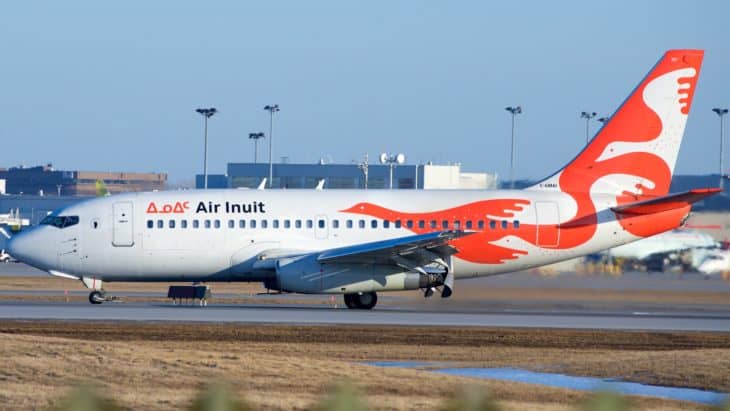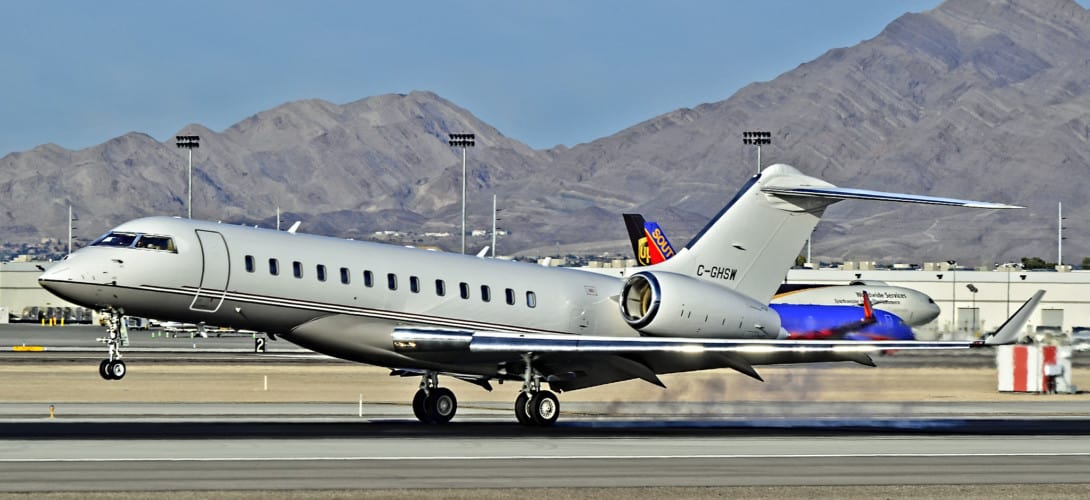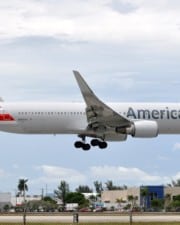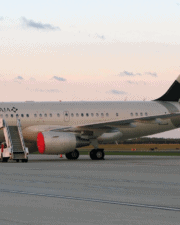Part 91 and Part 121 of the Federal Aviation Regulations (FARs) are both regulating the operation of aircraft in the United States. Both apply to commercial and private operations within the US, including those that operate scheduled passenger service. So what’s the difference?
Part 91 of the FARs prescribes the minimum safe operating standards for general aviation aircraft and pilots. Part 121 prescribes the minimum safe operating standards for certificated air carriers, typically aircraft seating more than 20 passengers.
The Federal Aviation Administration (FAA) is a government agency responsible for the regulation of civil aviation in the United States. The FAA’s main job is to promote aviation safety. To do this, the FAA creates and enforces rules and regulations for everything related to civil aviation.
FARs are a set of regulations that apply to all aspects of civil aviation in the United States. They are divided into different parts, each covering a different topic.
Part 91 of the FARs covers general operating and flight rules. Part 91 is applicable to all aircraft, regardless of their purpose or use.
Part 121 of the FARs applies to commercial airlines. It covers all aspects of airlines operations, from aircraft maintenance to pilot training.
Aviation is a complex industry, and there are many rules and regulations that apply to it. The FARs are just one set of rules that govern aviation in the United States.
About Part 91
Part 91 of the Federal Aviation Regulations (FARs) applies to all General Aviation (GA) operations conducted in the United States. General Aviation includes all aviation activity not conducted by the military or by commercial airlines.
There are three main types of GA operations: personal, business, and instructional. Part 91 covers all three types of GA operations.
Personal GA operations are those conducted for personal pleasure or recreation. Business GA operations are those conducted for the purpose of conducting business, such as travel to meetings or conventions.

Instructional GA operations are those conducted for the purpose of providing flight instruction.
Part 91 of the FARs prescribes the minimum safe operating standards for GA aircraft and pilots.
The regulations in Part 91 are not as comprehensive or detailed as those in other Parts of the FARs, such as Part 121 (which applies to commercial airlines) or Part 135 (which applies to charter and other air taxi operations).
Why Was Part 91 Introduced?
The FAA established Part 91 in order to establish a uniform set of regulations for all General Aviation activities. This includes everything from small, personal aircraft to large commercial jets.
The introduction of Part 91 helped to improve safety standards and procedures within the aviation industry as a whole. Prior to the introduction of Part 91, there was no specific set of rules that applied to all General Aviation operations.
As a result, the FAA felt that it was necessary to create a separate set of rules specifically for this type of operation in order to improve safety within the industry.
What is The Purpose of Part 91?
The primary purpose of 14 CFR Part 91 is to prescribe only those regulations that are necessary for the safety of flight. In other words, the regulations in Part 91 are not intended to be all-inclusive.
Instead, they are meant to supplement other existing regulations. In addition, the regulations in Part 91 are not as detailed or comprehensive as those in other Parts of the FARs.
Part 91 covers all General Aviation operations that are not conducted under Parts 121, 125, 129, or 135 of this chapter. The regulations in Part 91 are generally applicable to the operation of all aircraft, although there are some regulations that apply only to certain types of aircraft or operations.
About Part 121
Part 121 of the Federal Aviation Regulations (FARs) applies to all scheduled passenger and cargo operations conducted by certificated air carriers.
Part 121 prescribes the minimum safe operating standards for certificated air carriers.
A certificated air carrier is an airline that holds a certificate of public convenience and necessity issued by the U.S. Department of Transportation (DOT).

The regulations in Part 121 are more comprehensive and detailed than those in other Parts of the FARs, such as Part 91 (which applies to General Aviation operations) or Part 135 (which applies to charter and other air taxi operations).
Part 121 requires that certificated air carriers conduct their operations using aircraft that are type-certificated for scheduled service and that are operated by pilots who hold commercial pilot certificates.
In addition, Part 121 requires that certificated air carriers maintain certain records and make them available to the FAA upon request.
Why Was Part 121 Introduced?
Part 121 was introduced in order to deal with the regulations for air carriers and commercial operators. The FARs are constantly evolving, and Part 121 was introduced as a response to the changing needs of the commercial aviation industry.
The main focus of Part 121 is to make sure that these entities maintain the highest standards of safety for their passengers, crew, and cargo. Part 121 covers a wide variety of topics, from pilot qualifications to required maintenance intervals for the aircraft.
The introduction of Part 121 helped to improve accountability and communication among all those involved in aircraft operation, further improving safety standards.
Part 121 also helped to establish a clear chain of responsibility among those who play a role in the operation of an aircraft.
What is The Purpose of Part 121?
The main focus of Part 121 is on large commercial aircraft that seat more than 20 passengers or a maximum payload capacity of 6,000 pounds (2,722 kg).
The commercial transportation of passengers and cargo by air is a complex operation that has potential safety risks. To help address these risks, the Federal Aviation Administration (FAA) has developed regulations, known as Part 121 of the Code of Federal Regulations.
Part 121 was designed to promote safety in commercial aviation by establishing operating rules and regulations that are more stringent than those for General Aviation.
The increased safety is achieved through the application of standardized procedures and thorough training of flight crews and other personnel involved in commercial air operations.
Part 91 and Part 121: Differences
The regulations of Part 91 mainly differ from those of Part 121 in that they are much more lenient. The standards for flight crews, aircraft maintenance, and required rest periods are all lower when flying under a Part 91 certificate.
While a Part 121 operator is required to have two pilots on every flight, a Part 91 operator only needs one pilot on staff.
The main distinction between the two Parts is that Part 121 covers all scheduled passenger and cargo services, while Part 91 only covers unscheduled services.
While Part 121 operators must use aircraft that weigh less than 300,000 pounds (136,078 kg) there is no weight limit for Part 91 operators.
Part 121 also requires that pilots have an instrument rating, while Part 91 does not.
Lastly, Part 121 imposes minimum rest requirements for pilots and crew members, while there are no such requirements under Part 91.
In short, Part 121 covers all commercial passenger and cargo services, while Part 91 only covers unscheduled flights. The regulations of Part 91 are much more lenient than those of Part 121, with lower standards for flight crews, aircraft maintenance, and required rest periods.
Part 91 and Part 121: Similarities
Part 91 and Part 121 of the Federal Aviation Regulations (FARs) are both regulating the operation of aircraft in the United States. Both apply to all commercial and private operations within the US, including those that operate scheduled passenger service.
The main similarity between the two parts is that they both lay out the requirements for how an aircraft must be operated in order to ensure safety.
This includes things like maintaining two-way radio communication, having a minimum number of qualified crew members on board, and adhering to published instrument procedures.
What’s Better About Part 91?
Under Part 91, the rules and regulations are much more flexible than those found in Part 121. This makes it a popular choice for General Aviation operators who want to have more freedom in how they operate their aircraft.
Part 91 also does not require an operator to submit their schedule to the FAA for approval, as is required under Part 121.
Ultimately, the main advantage of Part 91 is that it is much less restrictive than Part 121, giving operators more flexibility in how they operate their aircraft.
What’s Better About Part 121?
The primary benefit of being Part 121 compliant is that an airline can now fly its aircraft to any destination without having to adhere to the myriad of restrictions placed on general aircraft operators.
Part 121 also requires that an airline have a certain level of insurance, which protects the passengers in case of an accident. This insurance is not required for General Aviation operators, which means that passengers on private planes are not as well protected in the event of an accident.
In addition, Part 121 requires that airlines submit their schedules to the FAA for approval, while General Aviation operators do not have to do this. This allows the FAA to better monitor airlines and ensure that they are adhering to their approved schedules.
Ultimately, the main advantage of Part 121 is that it creates a higher level of safety for passengers by mandating stricter rules and requirements for airlines.
Conclusion
The FAA’s guidelines can be difficult to understand, but it is important for all airplane operators to have a basic understanding of the FAA’s regulations.
Part 91 and Part 121 are the two operation specifications that an air carrier can choose from when deciding how it will conduct its business.
The majority of large commercial airlines operate under Part 121, which has much more rigid rules and regulations than Part 91.
On the other hand, small private charter companies will typically opt for a Part 91 license as it is less expensive and time-consuming to obtain.
Related Posts













